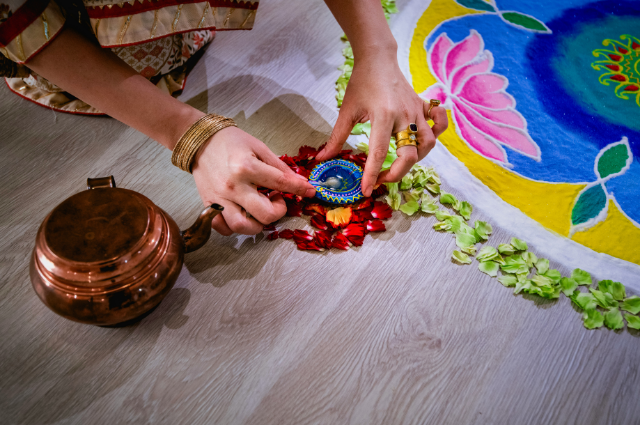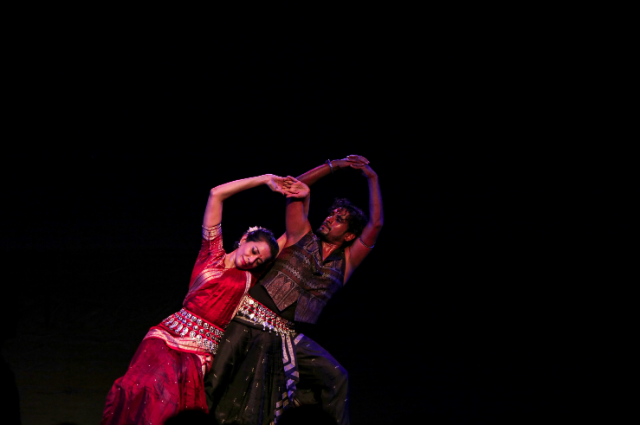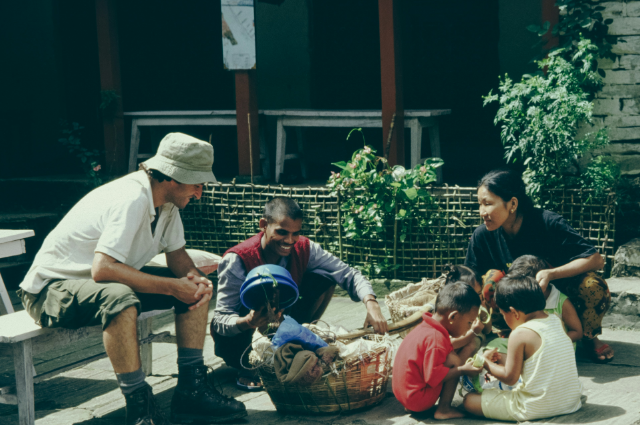
CULTURAL DIPLOMACY: AS A SOFT POWER TOOL
1. India's Cultural Wealth as a Diplomatic Asset:
India’s rich cultural heritage, spanning millennia, acts as a formidable tool for soft power. The country draws from its diverse traditions—yoga, classical arts, spiritual philosophies, and festivals—to connect with nations on a human level.
This approach transcends political discourse and creates deeper, emotional bonds, making India not just an economic force but a cultural one that resonates globally.
2. Cultural Diplomacy as a Strategic Bridge:
Within BRICS, India's cultural diplomacy operates as a bridge between countries that are diverse in language, governance, and societal norms. By emphasizing common values such as respect for sovereignty, non-interference, and peaceful coexistence—found in its ancient philosophies—India fosters an environment of trust and mutual respect.
This cultural exchange helps smoothen geopolitical differences, positioning India as a mediator and facilitator in the group.
3. Reinforcing Global Leadership through Soft Power:
India's cultural initiatives within BRICS—like promoting yoga on the international stage, organizing festivals, and collaborating on heritage preservation projects—have allowed it to project soft power without overtly political overtones.
These initiatives build India's image as a leader rooted in peace and human connection, subtly reinforcing its leadership in global discussions while avoiding the contentiousness that comes with hard power tactics.
4. Shared Cultural Narratives to Strengthen Partnerships:
India strategically taps into shared historical and cultural connections with BRICS members, particularly with Russia and China, through Buddhism, trade routes, and ancient exchanges of knowledge.
This shared cultural legacy serves as a basis for collaboration, reminding countries that their partnership is built on a deep-rooted, historical alliance, not just modern-day political interests.
5. Cultural Diplomacy and Trust Building:
By promoting shared values like inclusivity, tolerance, and sustainability in its cultural outreach, India uses its heritage to build trust. These soft power elements make it easier to collaborate on global development issues such as climate change, education, and digital economy.
This trust, nurtured through cultural understanding, enhances India's influence and ensures smoother cooperation on the BRICS platform.
This analysis captures how India's cultural diplomacy not only enhances its global influence but also strengthens its leadership role within BRICS by fostering trust, mutual respect, and long-lasting partnerships.
PROMOTION OF SHARED CULTURAL NARRATIVES:

India's approach to promoting shared cultural narratives with BRICS countries creates a bridge between diverse nations, building stronger regional and global partnerships.
1. Reviving Historical Ties:
India taps into historical connections with BRICS members, such as ancient trade routes, spiritual links, and intellectual exchanges, to create a sense of shared heritage. By emphasizing these commonalities, India fosters a deeper bond, making cooperation in modern arenas feel more natural and grounded in mutual respect.
2. Showcasing Cultural Heritage:
Through cultural festivals, film exchanges, and showcasing traditional art forms, India promotes a blend of BRICS cultures. This creates a sense of shared identity that celebrates diversity while finding common ground in values like family, spirituality, and community.
3. Educational and Academic Collaboration:
India encourages partnerships among BRICS nations through educational exchanges and research collaborations, focusing on cultural studies. This intellectual exchange not only builds understanding but also helps future generations in BRICS countries appreciate and preserve their interconnected heritage.
4. Soft Power Diplomacy:
Using its rich cultural legacy, including yoga, literature, and cuisine, India projects its soft power to inspire cooperation. Shared cultural values, like respect for traditions and unity, become a foundation for building trust and long-term global partnerships within BRICS.
5. Cultural Narratives as Diplomatic Tools:
India strategically integrates cultural storytelling into its diplomatic efforts, using shared narratives of peace, resilience, and innovation. This positions BRICS as a collective force of diverse cultures working together toward global development, encouraging mutual understanding and collaboration on pressing issues like climate change and economic disparity.
India's emphasis on shared cultural values within BRICS acts as a powerful unifying factor, promoting not only mutual understanding but also cooperation on a global scale.
CULTURAL EXCHANGES FOR DEVELOPMENT COOPERATION:

1. Yoga as a Global Unifier:
India’s promotion of yoga through initiatives like International Yoga Day has created a global movement that transcends borders. This ancient practice has been embraced worldwide not just for its health benefits, but also for its philosophy of harmony and balance.
Through yoga, India fosters cross-cultural dialogue, strengthening ties with countries that share an interest in holistic wellness, leading to collaborations in healthcare and education sectors.
2. Classical Music as a Cultural Connector:
India's classical music, particularly through events like the Spic Macay movement and international concerts, plays a vital role in uniting diverse cultures. These performances expose global audiences to India’s rich heritage, creating appreciation and respect for its traditions.
As a result, cultural diplomacy flourishes, leading to collaborations in the arts, music education exchanges, and tourism growth tied to cultural heritage.
3. Cinema as a Medium for Storytelling and Soft Power:
Bollywood and Indian cinema, widely popular in many BRICS and non-BRICS nations, serve as powerful vehicles for cultural diplomacy. Through storytelling, Indian films reflect social values, traditions, and global issues, offering a medium for cultural exchange.
Cinema-driven diplomacy has sparked cooperation in the media industry, increased tourism, and opened doors for joint ventures in filmmaking, content production, and creative arts education.
4. Festivals as Platforms for Intercultural Dialogue:
Cultural festivals like the Festival of India, held in countries like Russia, China, and South Africa, offer platforms for people-to-people interaction.
By showcasing Indian dance, crafts, and culinary traditions, these festivals spark cross-cultural dialogue, encouraging international partnerships in the tourism industry, heritage conservation, and educational programs that promote cultural understanding.
5. Cultural Diplomacy for Economic Cooperation:
These cultural exchanges do more than promote goodwill; they create opportunities for economic collaboration. By fostering cultural tourism, educational partnerships, and creative industries, India leverages its cultural assets to attract investment and collaboration in sectors like hospitality, event management, and sustainable development.
This approach enhances India’s role in global development through both cultural influence and economic engagement.
These initiatives underline how cultural exchange serves as a dynamic tool for development cooperation, creating meaningful connections across diverse sectors.
CULTURE AS A CATALYST FOR SUSTAINABLE DEVELOPMENT:
1. Culture as a Foundation for Sustainable Practices:
Culture shapes how societies interact with nature and resources. In India, traditional knowledge systems emphasize sustainability, with practices like organic farming, Ayurveda, and water conservation being part of daily life.
By integrating these cultural elements into BRICS strategies, India demonstrates how cultural heritage can influence sustainable economic growth, creating models of development that respect both people and the planet.
2. Cultural Preservation and Economic Empowerment:
India’s effort to preserve cultural traditions, such as handicrafts, textiles, and indigenous art forms, is directly linked to economic empowerment. Promoting these industries not only protects heritage but also creates livelihoods for rural and marginalized communities.
In the BRICS framework, this cultural-economic approach aligns with inclusive growth and social equity, showing how preserving culture contributes to reducing poverty and inequality.
3. Cultural Diplomacy as a Unifying Force:
Within BRICS, India uses cultural diplomacy to forge deeper ties with member nations. Yoga, cuisine, cinema, and festivals become platforms for collaboration, fostering trust and cooperation on sustainable development goals.
Culture humanizes diplomacy, making global agreements more relatable and enhancing mutual understanding in shared development pursuits.
4. Aligning Culture with Global Sustainability Goals:
India's focus on cultural sustainability fits within broader global frameworks, such as UNESCO’s cultural sustainability goals. These emphasize the need to safeguard cultural heritage while promoting economic and social sustainability.
By aligning BRICS initiatives with these global agendas, India ensures that cultural preservation becomes a cornerstone of sustainable development, enhancing resilience against challenges like climate change and rapid urbanization.
5. Innovation Rooted in Tradition:
India's blend of modern innovation with ancient wisdom positions culture as a driver of sustainable solutions. Projects like eco-friendly architecture inspired by traditional Indian designs or renewable energy systems rooted in community-led models exemplify how culture can inspire innovative strategies for sustainable development. In the BRICS context, this creates a blueprint for other nations to follow, proving that culture and progress go hand-in-hand.
This approach showcases how culture not only preserves heritage but actively contributes to global sustainable development, with India playing a key role in integrating cultural richness into BRICS strategies.
LEVERAGING CULTURAL DIPLOMACY FOR GLOBAL PARTNERSHIPS:

1. Cultural Diplomacy as a Gateway to New Regions:
India uses cultural diplomacy as a strategic tool to build relationships with regions like Africa and Latin America. By promoting its cultural values—such as yoga, spirituality, cuisine, and Bollywood—India creates a sense of familiarity and trust.
This cultural outreach opens doors to dialogue in trade, technology, and education, paving the way for deeper partnerships beyond BRICS.
2. Strengthening Economic Cooperation Through Culture:
Culture acts as an entry point for India to boost economic cooperation. For instance, cultural festivals, exhibitions, and exchanges create a positive image of India, making countries more willing to collaborate in areas like tourism, infrastructure, and business.
The cultural connection often translates into economic opportunities, attracting investments and fostering bilateral trade agreements.
3. Fostering Innovation Through Shared Knowledge:
India’s cultural diplomacy encourages cross-cultural collaboration in science, technology, and education. Through knowledge-sharing programs, such as student exchange initiatives and technology transfers, India promotes innovation in sectors like agriculture, healthcare, and renewable energy.
By linking cultural diplomacy with intellectual collaboration, India helps emerging economies tap into innovative solutions.
4. Long-term Alliances Through Cultural Collaboration:
Building long-term alliances is central to India’s approach. By establishing cultural centers, language programs, and academic partnerships in Africa and Latin America, India fosters long-lasting relationships. These initiatives go beyond symbolic gestures; they create enduring links that help solidify India’s role as a trusted partner in global development.
5. Sustainable Development and Cultural Diplomacy
India integrates cultural diplomacy into sustainable development agendas. For example, India collaborates with African and Latin American countries on projects that promote cultural heritage preservation alongside sustainable economic growth.
This holistic approach blends culture with sustainable practices, ensuring that development is both inclusive and respectful of local traditions.
In these ways, India leverages cultural diplomacy not just as a soft power tool but as a catalyst for innovation, economic cooperation, and sustainable global partnerships that last well beyond formal agreements
CONCLUSION
In conclusion, India's cultural diplomacy serves as a vital instrument for fostering meaningful and lasting global partnerships. By integrating its rich heritage with strategic development efforts, India creates a foundation of trust, shared innovation, and economic cooperation. As these cultural exchanges continue to bridge gaps between nations, they not only enhance India's influence beyond BRICS but also contribute to a more inclusive and collaborative global development landscape. Through the power of culture, India is crafting alliances that transcend borders, creating pathways for sustainable growth and mutual prosperity.
